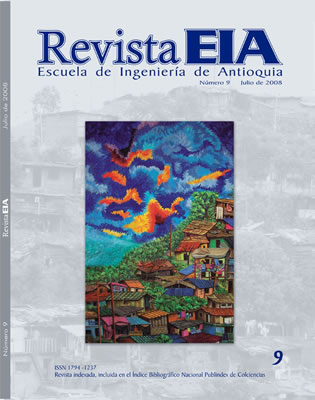ANNUAL AND DIURNAL CYCLES OF THE INVERSE RELATION BETWEEN PLANT TRANSPIRATION AND CARBON SEQUESTRATION
ANNUAL AND DIURNAL CYCLES OF THE INVERSE RELATION BETWEEN PLANT TRANSPIRATION AND CARBON SEQUESTRATION


This work is licensed under a Creative Commons Attribution-NonCommercial-NoDerivatives 4.0 International License.
Copyright statement
The authors exclusively assign to the Universidad EIA, with the power to assign to third parties, all the exploitation rights that derive from the works that are accepted for publication in the Revista EIA, as well as in any product derived from it and, in in particular, those of reproduction, distribution, public communication (including interactive making available) and transformation (including adaptation, modification and, where appropriate, translation), for all types of exploitation (by way of example and not limitation : in paper, electronic, online, computer or audiovisual format, as well as in any other format, even for promotional or advertising purposes and / or for the production of derivative products), for a worldwide territorial scope and for the entire duration of the rights provided for in the current published text of the Intellectual Property Law. This assignment will be made by the authors without the right to any type of remuneration or compensation.
Consequently, the author may not publish or disseminate the works that are selected for publication in the Revista EIA, neither totally nor partially, nor authorize their publication to third parties, without the prior express authorization, requested and granted in writing, from the Univeridad EIA.
Show authors biography
Understanding biogeochemical cycles and especially carbon budgets is clue to validate global change models in the present and near future. As a consequence, sinks and sources of carbon in the world are being studied. One of those sinks is the non-well known behavior of the planet vegetation which involves the processes of photosynthesis and respiration. Carbon sequestration rates are highly related to the transpiration through a molecular diffusion process occurring at the stomatal level which can be recorded by an eddy covariance micrometeorological station. This paper explores annual and diurnal cycles of latent heat (LE) and CO2 net (FC) fluxes over 6 different ecosystems. Based on the physics of the transpiration process, different time-scale analysis are performed, finding a near-linear relation between LE and CO2 net fluxes, which is stronger at the more vegetated areas. The North American monsoon season increases carbon up taking and LE-CO2 flux relation preserves at different time scales analysis (hours to days to months).
Resumen: El conocimiento de los ciclos biogeoquímicos y, en especial, de los balances de carbono es clave para la validación de los modelos de cambio global para el presente y el futuro cercano. Como consecuencia, en el mundo se estudian las fuentes y los sumideros de carbono. Uno de esos sumideros es la vegetación del planeta, que involucra los procesos de respiración y fotosíntesis y cuyo comportamiento se empieza a estudiar. Las tasas de captura del carbono están muy ligadas a la transpiración mediante un proceso de difusión molecular en los estomas, que puede registrarse por un sistema micrometeorológico de eddy covarianza. Este artículo explora los ciclos anuales y diurnos de los flujos netos de CO2 y calor latente de seis ecosistemas diferentes. Se desarrollan diversos análisis de escala temporal, basados en la física de la transpiración, y se halla una relación cuasilineal entre los flujos netos de calor latente y CO2, más fuerte en las áreas con mayor cobertura vegetal. La temporada del monzón norteamericano incrementa la captura de carbono y la relación entre la evapotranspiración y el intercambio de gas carbónico se mantiene en las diferentes escalas temporales analizadas (horas, días, meses).
Article visits 215 | PDF visits 139
